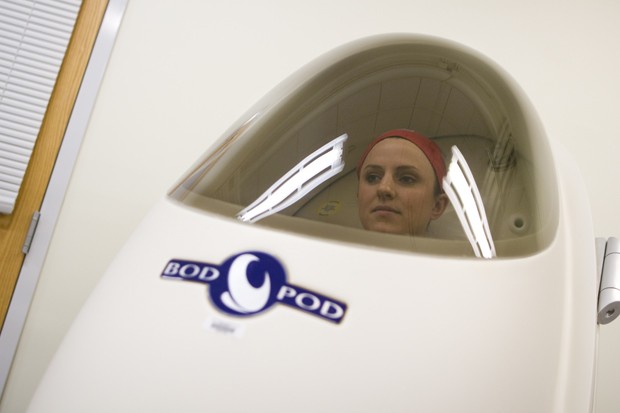PE 1262 Marathon Training is no normal class. It meets at 7:30 a.m. Sundays, students are encouraged to run five times a week and the data they log during training may help illuminate the physical effects of long-distance running. The research could strain the widely held theory that athletes sacrifice explosive power and agility when they train for long-distance running and aerobic activity, said Dr. Stacy Ingraham, a kinesiology researcher who is heading up the research component of the class. âÄúThe literature has definitely been skewed by some pretty poor data,âÄù Ingraham said. âÄúWeâÄôre just trying to quantify it in a different way.âÄù Even though valuable data may come from the studentsâÄô logs, the class is not a lab; itâÄôs about teaching students to train for the marathon. Chris Lundstrom, one of the instructors, said many students in the class have no scientific background and most had never run a marathon before. Many had no running background at all. âÄúThere were some people, the first time they trained, who couldnâÄôt even do a mile,âÄù said Ben Kampf, a graduate student and teaching assistant for the class. âÄúNow, tomorrow theyâÄôre going to do 10.âÄù By the end of the semester, theyâÄôll be doing 26.2 miles âÄî or risk failing. Completion of the Eau Claire Marathon accounts for 40 percent of the grade, Lundstrom said. Along the way, a battery of tests will allow the professors and TAs to establish baseline fitness levels for each student in areas like the vertical jump, two-mile run, oxygen transport and body composition. At the end of the class, theyâÄôll perform the same tests again and note any changes. âÄúTheyâÄôre just as interested in all this stuff as we are,âÄù said Chris Carroll, a graduate student who is gathering data from the class. University senior Carly Volzer said the class structure and the physiological data will give her a structured way to train for the marathon. âÄúI think that actually assigning a number to these things is very helpful,âÄù Volzer said. Biology junior Kelsi Upmann, who has already completed a marathon, said the data are interesting, but sheâÄôs more concerned with simply training toward her time goals. âÄúI think itâÄôs cool to know what my numbers are and everything,âÄù Upmann said. âÄúBut itâÄôs probably not going to consciously change my training program from what I was going to do originally, but I do like to see how itâÄôs changing.âÄù The students find their baseline fitness levels with simple tests like the standing long-jump and a timed run. They also use more complex tests like the Bod Pod, an egg-shaped chamber that measures body fat. Compared to a bathroom scale, that body composition readout paints a far better picture of overall health. âÄúBy not having to focus just on that scale number, you can see whatâÄôs fat and whatâÄôs fat-free mass by looking at the compositional changes,âÄù said Sarah Mork, a University kinesiology and Carlson School of Management triple-major who coordinates Bod Pod testing. Many of the marathon- training students will lose fat and gain muscle, so weight alone wouldnâÄôt reflect that significant and positive change. Over the 12 weeks of the course last spring, the students lost an average of more than 2 percent body fat. In some, that number was as high as 5 percent, but as a class, weight changed little. Some even gained weight, mostly muscle, Carroll said. âÄúIf youâÄôre looking to lose weight, marathon training probably is not going to be the most effective vehicle,âÄù Carroll said. âÄúBut if you look at it in terms of cardiovascularhealth and terms of lifelong health, itâÄôs a huge deal.âÄù Volzer said learning her own body fat percentage may be motivating, but sheâÄôs training for the marathon for other reasons, namely, as a change of pace from traditional coursework. âÄú[Class] is so much sitting, reading a book, sitting, at a computer, sitting, sitting, sitting,âÄù Volzer said. âÄúI consider this [class] a gift to myself.âÄù











